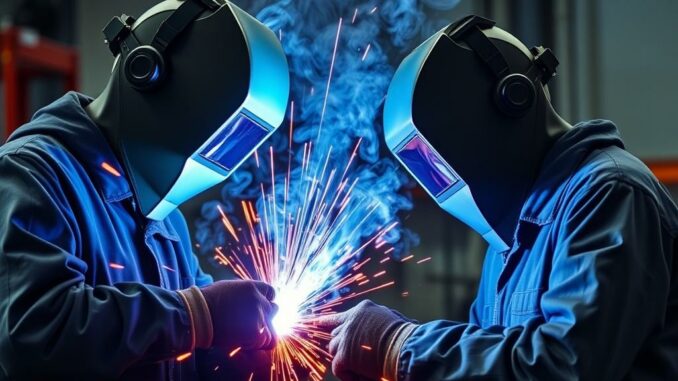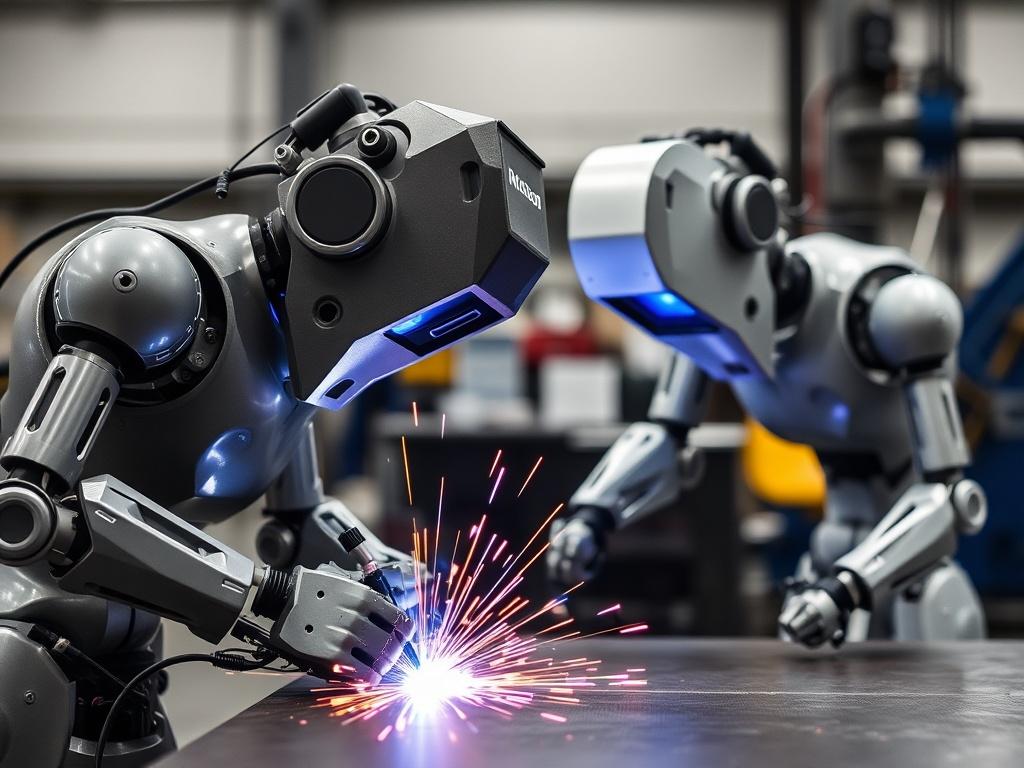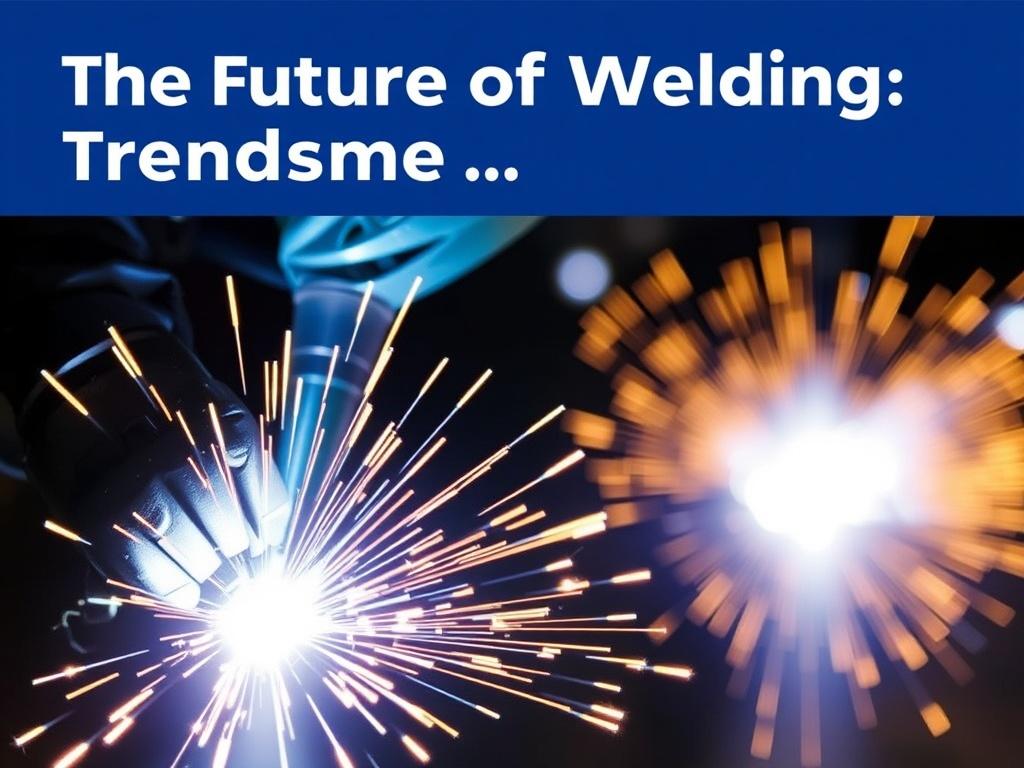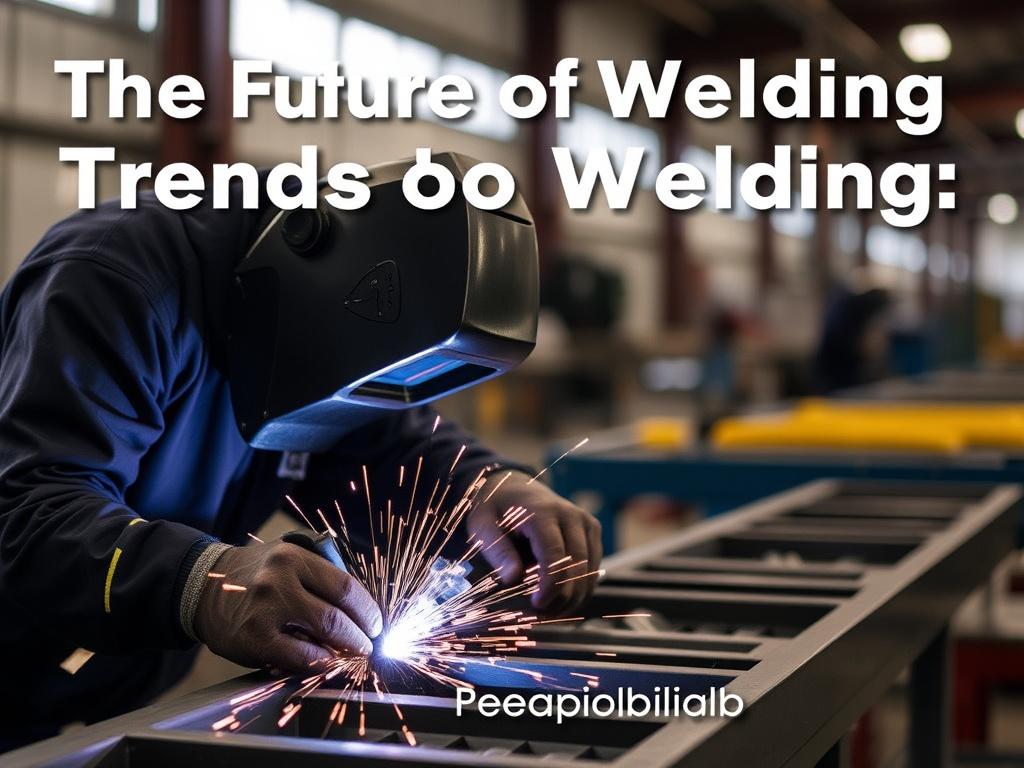
SQLITE NOT INSTALLED
Welding has been an essential part of manufacturing, construction, and engineering for centuries. This age-old craft, rooted in human innovation, continues to evolve rapidly with technological advancements. As we look to the future, welding is undergoing a transformative shift—shaped by automation, digital innovation, and sustainable practices. Whether you’re a seasoned welder, an industry professional, or simply a curious reader, understanding these trends will give you a front-row seat to what’s shaping the future of welding.
In this article, we’re going to explore the key trends shaping the future of welding. From emerging technologies and automation to workforce development and environmental impacts, we’ll go deep into what you need to know. We’ll cover innovations in robotic welding, advancements in welding equipment, the role of artificial intelligence, and the importance of safety and sustainability. So, buckle up and join me on this comprehensive journey into the exciting future of welding!
Understanding Welding Today: A Foundation for Future Trends
Before diving into the future, it’s important to understand the current state of welding. Today, welding involves joining materials—usually metals or thermoplastics—through various processes such as arc welding, MIG (Metal Inert Gas), TIG (Tungsten Inert Gas), and more. These processes rely on heat, pressure, or both to join materials securely.
The welding industry currently supports numerous key sectors, including automotive, aerospace, construction, energy, and heavy manufacturing. Each of these fields demands precision, strength, and reliability, which has driven steady improvements in welding techniques and equipment over the past decades.
Despite its established presence, welding still faces challenges like labor shortages, safety concerns, and environmental impact. Identifying these challenges today helps us understand why the future trends focus heavily on technology, sustainability, and workforce development.
The Role of Skilled Welders Today
Skilled welders remain the backbone of the industry. Their expertise in handling complex welding tasks under varying conditions is unmatched by machines alone, at least for now. The demand for skilled welders is high, but the workforce is aging, and fewer new welders are entering the field. This labor shortage is a pressing issue that is prompting many organizations to embrace automation and training innovations.
Here’s a quick look at the current workforce challenges:
- Aging workforce with many retiring soon
- High demand for welders in diverse industries
- Need for continual upskilling due to new technologies
- Safety concerns and injury risks on the job
These challenges are drivers for many of the future trends we will discuss next.
Trend #1: Automation in Welding – Robots Taking the Lead

One of the most significant trends shaping the future of welding is automation. Robotic welding systems have been around for decades but are becoming increasingly sophisticated and accessible. Automation not only improves productivity but also enhances consistency, quality, and safety.
Let’s explore what robotic welding means for the industry and why it’s here to stay.
What is Robotic Welding?
Robotic welding involves using programmable machines that perform welds automatically. These robots can handle repetitive tasks with a level of precision and speed unattainable by human welders. They typically use sensors, cameras, and software to position welds accurately and monitor the process in real-time.
Robotic welding is especially popular in high-volume manufacturing settings such as automotive assembly lines, where identical welds are needed on numerous components quickly.
Benefits of Automation in Welding
| Benefit | Description |
|---|---|
| Increased Productivity | Robots can operate continuously without fatigue, increasing overall production output. |
| Improved Quality | Consistent welds reduce defects, ensuring higher quality standards. |
| Enhanced Safety | Reduces worker exposure to hazardous environments and repetitive strain injuries. |
| Cost Efficiency | Although upfront costs are high, reduced labor costs and errors save money long-term. |
| Data Collection | Automated systems can collect and analyze welding data for continuous improvement. |
These benefits explain why many companies large and small are investing heavily in automated welding solutions. The trend is toward hybrid systems, where robots assist welders rather than completely replacing them.
Challenges of Automation in Welding
Despite impressive benefits, there are some challenges to robotic welding adoption. High initial costs, need for specialized programming skills, and limitations in handling complex, custom tasks still exist. Moreover, the integration of robotics into existing workflows requires careful planning and staff training.
Yet, we expect these challenges to diminish over time as technology improves and becomes more user-friendly. Overall, automation is redefining the landscape of welding and will remain a dominant trend for decades.
Trend #2: Welding Equipment Innovation
Beyond automation, welding equipment itself is undergoing dramatic innovation. Manufacturers are developing lighter, more efficient, and smarter tools to meet demand for flexibility and precision.
This trend impacts both manual and automated welding processes and plays a crucial role in improving safety and productivity.
Advanced Welding Machines
Modern welding machines now integrate digital interfaces, allowing operators to control parameters such as voltage, amperage, feed rate, and wire speed with greater precision. Some machines come equipped with touchscreen displays, customizable presets, and diagnostics to help troubleshoot problems quickly.
Moreover, inverter technology is increasingly common in welding machines, offering energy-efficient performance and portable designs.
Smart Welding Tools
The future of welding equipment includes connectivity and intelligence. Smart welding tools equipped with sensors and IoT (Internet of Things) technology can monitor welding quality in real time, detect faults like incomplete fusion or porosity, and even provide data to cloud platforms for analysis.
Imagine a welder receiving instant feedback on weld quality through a headset or smartphone app while working on a project—that’s no longer science fiction.
Table: Comparing Traditional and Innovative Welding Equipment
| Aspect | Traditional Equipment | Innovative Equipment |
|---|---|---|
| Power Source | Transformer-based, bulky | Inverter-based, lightweight, portable |
| User Interface | Analog knobs, meters | Touchscreens, digital presets |
| Data Collection | Manual recording | Automatic, connected to cloud services |
| Maintenance | Frequent, often reactive | Predictive, based on sensor feedback |
| Energy Efficiency | Lower efficiency | High efficiency with reduced power consumption |
The Impact on Welders and Fabricators
New equipment trends are not just about the machines—they directly affect welders’ daily jobs. Easier-to-use, smarter tools can reduce errors, speed up work, and decrease fatigue. This improves overall workmanship and job satisfaction.
Furthermore, as welding equipment becomes more sophisticated, ongoing education and training will be crucial for operators to keep up. A tech-savvy welder will have more opportunities in the future.
Trend #3: Artificial Intelligence and Machine Learning in Welding

Artificial Intelligence (AI) and Machine Learning (ML) are buzzwords across many industries, and welding is no exception. These technologies are introducing new ways to enhance weld quality, diagnose defects, and optimize processes in ways humans alone cannot achieve.
AI-Powered Welding Inspection
Traditionally, weld inspection has been a manual, often time-consuming process involving visual inspection and destructive testing. AI-powered systems now use image recognition, X-rays, and ultrasonic data to assess weld quality instantly and non-destructively.
These systems learn from large datasets of good and bad welds to detect subtle defects like cracks, porosity, or lack of fusion, providing near-perfect accuracy and early warnings for corrective action.
Predictive Maintenance with Machine Learning
Welding machines generate valuable operational data—temperatures, voltages, cycle times, feedback from sensors, etc. By applying ML algorithms to this data, manufacturers can predict when equipment is likely to fail or require maintenance, minimizing downtime and repair costs.
Predictive maintenance is a growing trend not only in welding but across all industrial equipment. It ensures machines operate at peak efficiency, prolonging their useful lives.
Optimizing Welding Parameters
AI systems can also help welders by suggesting the ideal welding parameters based on material type, thickness, and position, reducing trial and error. For instance, ML algorithms analyze historical welding success rates and material properties to recommend voltage and speed settings for an optimum weld.
Challenges and Considerations
While AI and ML offer impressive benefits, their implementation comes with challenges. High development costs, data security concerns, and the need for extensive training data can limit adoption. However, as AI solutions become more affordable and user-friendly, they are expected to become standard tools in welding environments.
Trend #4: Sustainability and Environmental Responsibility

The future of welding doesn’t just focus on technology—it also aligns with global efforts toward sustainability and environmental care. Industries worldwide are under pressure to reduce carbon footprints, improve energy efficiency, and adopt green manufacturing practices. Welding is no exception.
Reducing Energy Consumption
Energy efficiency is becoming a key consideration in welding equipment design. Modern inverter-based machines consume less power and generate less heat, lowering energy costs and emissions.
Additionally, welding processes themselves are optimized to minimize waste—such as using precise material amounts and reducing spatter and defects.
Waste Reduction and Recycling
Welding produces scrap materials and byproducts that can harm the environment if not managed properly. Increasingly, welding shops adopt recycling programs and use eco-friendly consumables.
Some new flux and welding wire products are designed to be less toxic or made from recycled materials, contributing to sustainability.
Supporting Renewable Energy Infrastructure
Welding plays a vital role in building renewable energy devices, such as wind turbines and solar panels. As investments in these sectors grow, the welding industry becomes a key player in the global transition toward cleaner energy.
Trend #5: Workforce Development and Training
With all these advances in welding technology and processes, the importance of workforce development cannot be overstated. Training welders to effectively use new tools, understand automation, and embrace digital technology is crucial.
Modern Training Programs
Training methods have evolved from solely classroom lectures and hands-on practice to including virtual reality (VR), augmented reality (AR), and simulators. These immersive technologies help new welders practice skills in realistic, risk-free environments.
Such technologies also help experienced welders learn new techniques and practice complex welds that would be difficult or costly otherwise.
Bridging the Skills Gap
There’s a growing need to attract younger generations to welding careers. Workforce development programs are actively promoting welding as a dynamic, tech-forward profession. Offering competitive wages, certification opportunities, and career advancement paths is key to filling the skills gap.
Certification and Standards
As welding processes become more complex, certification bodies are updating standards to include competence in operating advanced machinery and understanding automation. This ensures safety, quality, and reliability across industries.
Trend #6: Integration of Welding with Digital Technologies
Digital transformation is sweeping across all industries, and welding is no exception. The integration of welding processes with digital technologies like CAD (Computer-Aided Design), CAM (Computer-Aided Manufacturing), and Industry 4.0 concepts is leading to smarter, more connected welding operations.
Welding and Industry 4.0
Industry 4.0 is about the digitalization and interconnectivity of manufacturing equipment and processes. In welding, this means machines communicate with each other and with central control systems to coordinate tasks, optimize workflow, and collect data.
This digital integration allows real-time monitoring, troubleshooting, and quality assurance, greatly improving manufacturing responsiveness and flexibility.
Design to Welding Execution
Digital tools allow seamless transition from design (using CAD software) to welding execution, with precise instructions and setups sent directly to welding machines or robots. This reduces errors, shortens lead times, and supports custom and small-batch manufacturing.
Summarizing the Future Trends in Welding
So, what does the future of welding look like when we put all these trends together? It’s clear that welding is transforming into a high-tech, intelligent, and sustainable industry. Here’s a brief overview of the key trends shaping this future:
- Automation and Robotics: Increasing adoption of robotic welding systems for higher efficiency and quality.
- Advanced Welding Equipment: The rise of smart, connected, and energy-efficient welding machines.
- Artificial Intelligence: Use of AI and machine learning to improve quality, inspection, and predictive maintenance.
- Sustainability: Eco-friendly practices, reduced energy consumption, and support for renewable energy sectors.
- Workforce Training: Enhanced education programs incorporating VR/AR and new certifications for advanced technology usage.
- Digital Integration: Industry 4.0 and digital workflows bridging design, manufacturing, and quality assurance.
Conclusion: Embracing the Future of Welding
Welding is not just about joining metals anymore—it’s about integrating cutting-edge technology, sustainable practices, and skilled human craftsmanship. The future of welding offers incredible opportunities for innovation, growth, and contribution to many essential industries like automotive, energy, infrastructure, and aerospace.
For welders, manufacturers, and industry leaders, embracing these trends is imperative to stay competitive and meet the evolving demands of the global economy. Whether it’s investing in robotic welding systems, adopting AI tools, or developing a skilled and adaptable workforce, the time to prepare for the future of welding is now.
Thank you for joining me on this deep dive into the future of welding. Stay curious, keep learning, and remember—whether by hand or by machine, welding will continue to be a foundational part of building our world.
